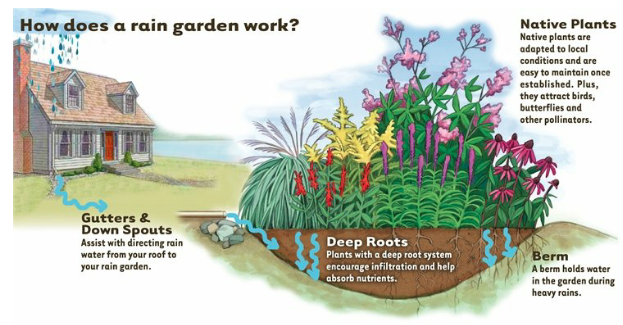Global water crises are now making themselves felt in far more apparent ways than ever before. Take the acute shortage of water that Chennai is facing currently in just one of the many early signs of an impending doomsday. In fact, as per the index prepared by the India’s NITI Aayog, almost 21 major Indian cities, including Delhi, Mumbai, and Patiala etc. will run out of groundwater. No surprise then, that the issue of water shortage and sustainability has taken centre stag, with several policies and laws being made to tackle this problem in a more effective way.
Additionally, several endeavours are on to come up with alternative methods to conserve the water resources we have. One of the most popular ways is by means of rainwater harvesting.
Rainwater Harvesting: The Benefits
Rainwater harvesting is, of course, the practice of accumulation of rain, on the surface of the earth itself and utilising it for other purposes. The water is collected in a manner that it is not exposed to any pollutants and is ideally, fit for consumption.
- Harvested rainwater becomes a significant solution to human needs, especially areas which are already suffering from a shortage of water or the where water is not usable. It can be channelled to several purposes, like for landscape irrigation, Household consumption or even for stormwater management. Apart from the obvious benefits of combating the problem of water shortage, rain water harvesting also confers the following advantages on us:
- It reduces our dependence on municipally treated water and thus reduces the associated costs.
- Brings down the amount of expenditure needed to be made to treat water for consumers and the government can, therefore, route that money to areas requiring more funding.
- Since the water is soft and free from salts and human contaminants, it is beneficial for the health of the consumer as well
- Doesn’t harm the environment in any way and is essentially a mode of free water for the consumer.
- Also, help tackle the problem of stormwater pollution and consequently lessening its impact on our local watersheds.
Popular techniques for Rainwater Harvesting
There is no “proper” technique for harvesting rainwater. It can be executed both by the very primitive method of merely setting up a bucket underneath a downspout from one’s terrace, and it can also mean the installation of a complex set of installations at a much bigger scale in cases of commercial buildings.
Talking specifically of India, rainwater harvesting has been practiced for more than 4000 years and is still active in several cities even at a commercial level. A good example is the 13-storey corporate office of V-Guard at Vennala. The building in question, as per a report in The Hindu (2015) doesn’t even have a municipal water connection, and the entire water consumption needs are met by the two open wells and an extensive rainwater harvesting system they rely on. This is not the sole example of how rainwater harvesting is being used in India in today’s times. Taking a cue from several methods which can be employed for harvesting rainwater, the following three are few of the most effective and yet unconventional ways to harvest rainwater.
Build a rain garden
A rain garden is one of the unpopular yet effective ways of utilising rainwater. Simply put, a rain garden is a shallow depression that allows rain to seep naturally into the ground by capturing runoff from rooftops and driveways. One has to pick a few deep rooted native plants and direct the rainwater which gets accumulated on rooftops to this shallow depression. This not only adds nutrients to the soil of your garden and adds to the aesthetic value of your homes, but it also recharges the water table in a better manner.

Source: https://seekampenvironmental.com/services-overview/rain-garden-guide/
Percolation tanks
Percolation tanks are human-made surface water bodies, which by means of submerging a given permeable area, lead to recharging of the water table with rainwater. The surface water also can be used for a variety of purposes like household consumption, landscaping etc. Such projects can be executed at an individual level if the house has adequate garden space or can also be done at a much bigger scale at a community level.
Build rain saucers
This is probably one of the easiest ways to collect rainwater for household consumption. One simply has to attach multiple contraptions shaped like an inverted umbrella to a common tank. It is a effective way to collect rainwater, especially in areas with very high rainfall. In the picture given below, a rain saucer is made using readily available and cheap material. A much bigger apparatus can also be set up with multiple contraptions and a much bigger tank in case the same is done at the community level.
Innumerable other methods are of course, up for being adopted. The choice of the most appropriate one would depend on factors like the amount of rainfall in the area, the available area, economic feasibility, and so on. In fact, many state governments, in a pursuit to encourage rainwater harvesting, are setting up camps and consultation centres where one can go to learn about the most appropriate methods of rainwater harvesting.
What is important here is that given the water shortage that the planet is facing, every drop of water should be utilised optimally and new avenues should be explored to minimise its wastage. In words of Dwight D. Eisenhower,
“Among these treasures of our land is water- fast becoming our most valuable, most prized, most critical resource.”